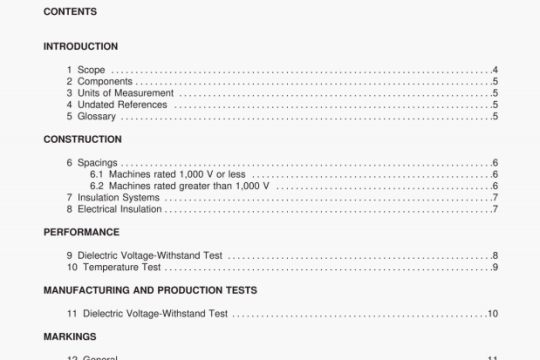UL 1023-2017 pdf download
UL 1023-2017 pdf download.Household Burglar-Alarm System Units.
47 Static Discharge Test
47.1 The components of a household burglar-alarm system unit shall be shielded so that the unit’s operation is not impaired, or a false alarm obtained, when subjected to static electric discharge.
CAUTION: Potentially Lethal Voltages Are Involved – Use Safely Precautions.
47.2 Each of two products is to be mounted in its intended mounting position on a 3/4 inch (19.1 mm) thick unpainted exterior grade plywood surface and connected to a source of supply in accordance with 28.2.2. If a product is intended to be installed on a metal electrical junction box, the box is to be connected to earth ground. A series combination of a 250-picofarad low leakage capacitor, rated 20,000 volts DC minimum, and a 1500-ohm resistor, is to be connected to two high-voltage insulated leads, 3 feet (0.9 m) long, and stripped 1 inch (25.4 mm) at each end. The end of each lead is to be attached to a 1/2 inch (12.7 mm) diameter metal test probe with a spherical end mounted on an insulating rod. The capacitors
are to be charged by touching the ends of the test leads to a source of 10,000 volts DC for at least 2 seconds for each discharge.
47.3 Ten discharges are to be applied to different points on the exposed surface of the product, and the capacitors are to be recharged prior to each discharge. Five discharges are to be made with one lead connected to earth ground and the other lead brought into contact with the product surface, fllowed by five discharges with the polarity reversed.
47.4 Following the discharges, the product shall comply with the requirements of the Operation Test, Section 29.
48 Temperature Test
48.1 The materials employed in the construction of a household burglar-alarm system unit shall not attain temperature rises greater than those indicated in Table 48.1.
48.2 The values for temperature in Table 48.1 are based on an assumed ambient temperature of 25
+15*C (77 +27*F), and tests are to be conducted at an ambient temperature within that range. A
temperature is considered to be constant when three successive readings taken at intervals of 10 percent of the previously elapsed duration of the test, but not less than at 5-minute intervals, indicate no change.
49 ChargIng Current Test
49.1 General
49.1.1 This test is to be conducted in conjunction with the Temperature Test, SectIon 48, on products provided with standby batteries, The product shall operate as intended during this test.
492 DIscharged battery
49.2.1 The measured voltage of an output circuit with a battery discharged as specified in 49.2.2— 49.2.4 shall not be less than 85 percent of the mariced rating of the output circuits.
49.2.2 The battery is first to be charged by applying AC input power to the product for 48 hours, during which the product Is to be operated continuously with the normal standby load connected. AC Input Is then to be disconnected, and terminal voltage of the battery is to be measured one minute after disconnection,
49.2.3 The battery is then to be discharged by maintaining the normal standby load connected to the output for 4 hours or the marked standby time,
49.2.4 At the conclusion of the discharge period, maximum (alarm) load is to be applied 104 4 minutes. The battery terminal voltage of the discharged battery and the voltage of all output circuits is then to be measured.
49.2.5 If the system Is marked for less than 24 hours of standby power, the test is then to be continued for a total discharge period of 24 hours.
49.3 Charged battery
49.3.1 The voltage of the charged battery as specified in 493.2 shall be at least 95 percent of the voltage measured In 49.2.2.
49.3.2 At the conclusion of the test sequence descnbed in 49.2.2 — 49.2.5, AC input power is to be reapplied to the product for 48 hours. During the charging, the product Is to be operated continuously with normal standby load connected, At the conclusion of the 48-hour recharge time, AC power is to be disconnected and the battery-terminal voltage measured after one minute.




